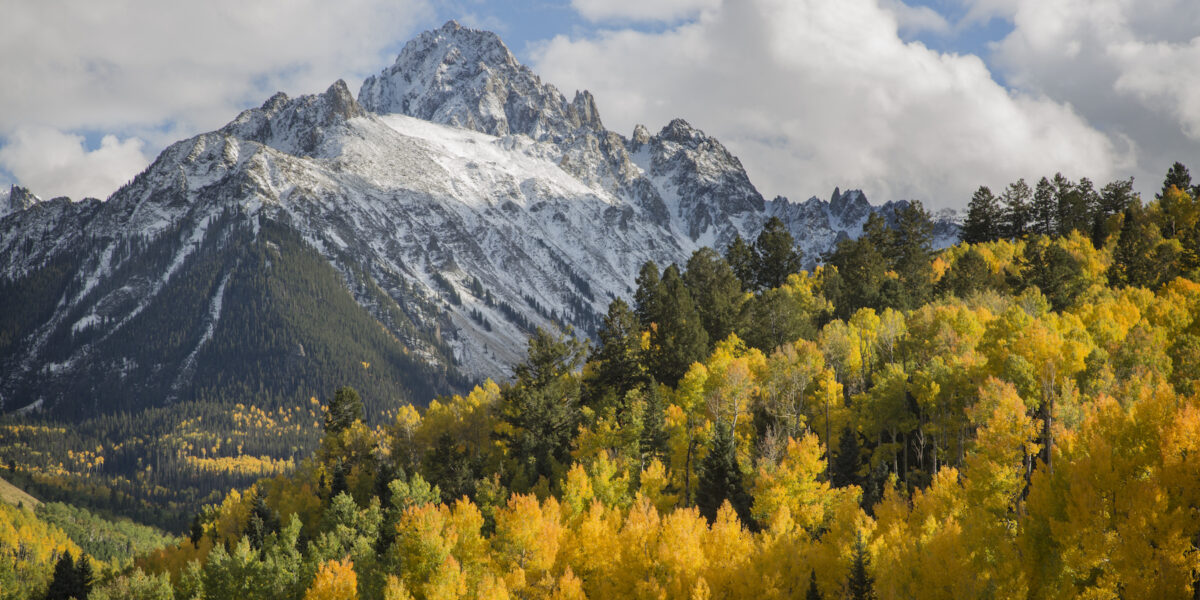
These 5 National Forests Have the Best Fall Leaf Peeping in the West
You don’t have to visit a National Park to see the seasons changing. Here are some of the best spots to camp.

Getty Images
If you’re a leaf peeper who’s obsessed with tracking the changing of the seasons, now is prime time to start planning. Smoky Mountains announced the launch of their annual Fall Foliage Predicting Map, which for nature lovers is just as much an indicator of the arrival of fall as Labor Day weekend is. While we’re huge fans of our country’s robust National Parks Service, there’s so much more to explore beyond that. Enter the National Forest Foundation, a lesser-touristed alternative that offers just as much grandeur, especially in the autumn.
If you’re a camper, National Forests will definitely be your jam. Tent camping is available in every National Forest, making them great for both car campers and RVers. (It’s of course important to research ahead, because certain campsites are first-come, first-serve, while others are reservable through Rec.gov. ) Dispersed camping is also a popular option within National Forests, as there is no fee and no reservation required, however it does come at the expense of no services; for instance, there may be no trash removal, toilets, or running water. It’s just you and the natural landscape! Here are the top five National Forests in the West for fall foliage to explore.
Okanogan-Wenatchee National Forest (Washington)
Okanogan-Wenatchee National Forest is within close proximity of Seattle. The large, diverse landscape spans 3.8 million acres along the east slopes of the Cascade Range and offers high, glaciated alpine peaks along the Cascade Crest and deep, lush valleys of old growth forest on its eastern edge, the latter of which brings spectacular coloring in the fall months.
Umpqua National Forest (Oregon)
About 2.5 hours from Eugene, Oregon, you’ll find the home of The Cow Creek Band of Umpqua Tribe of Indians, The Confederated Tribes of Grand Ronde, and the Confederated Tribes of Siletz Indians in the Umpqua National Forest. Here, you’ll find a diverse place of thundering waters, high mountain lakes, heart-stopping rapids, and peaceful ponds that abound with wildlife, including a salmon run of Coho.
Bridger Teton National Forest (Wyoming)
With it’s close proximity to Jackson Hole, Bridger Teton National Forest is a stunning place to witness the fall in Wyoming. It’s also a spectacular location to see Wyoming wildflowers, like the Indian paintbrush, in the spring, too.
Uinta-Wasatch-Cache National Forest (Utah)
Uinta-Wasatch-Cache National Forest is a massive expanse of 2,169,596 acres, and the portion of it just outside Salt Lake City is one of our favorite locations along this hot springs road trip. In the fall, the forest lights up with color-changing aspen especially in mid-September through mid-October.
White River National Forest (Colorado)
Within close proximity of Aspen you’ll find White River National Forest, which in the winter draws travelers seeking out its world-renowned ski resorts like Breckenridge, Arapahoe, Copper Mountain, and Keystone. With 10 peaks over 14,000 feet, and eight Wilderness Areas encompassing more than 750,000 acres, the Forest is renowned for its scenery and density of these “fourteeners.” And, in the fall, those hikes become even more scenic with a rainbow of color-changing leaves that make shoulder season the ideal time to explore.
